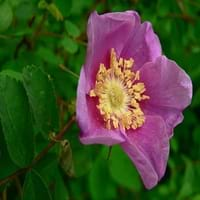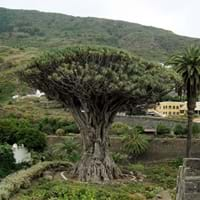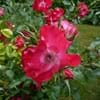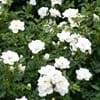Life Span
Perennial
Perennial
Type
Flowering Plants
Broadleaf Evergreen
Origin
Canada
Canary Islands
Types
Not Available
Not Available
Habitat
coastal environs, Deciduous forests, Fields
Volcanic Islands
USDA Hardiness Zone
8-14
11-12
Sunset Zone
H1, H2, 4, 5, 6, 7, 8, 9, 10, 11, 12, 13, 14, 15, 16, 17, 18, 19, 20, 21, 22, 23, 24
16, 17, 21, 22, 23, 24
Habit
Clump-Forming
Upright/Erect
Flower Color
Yellow
White
Flower Color Modifier
Bicolor
Not Available
Fruit Color
Brown, Sandy Brown
Not Available
Leaf Color in Spring
Green, Blue Green, Gray Green
Dark Green
Leaf Color in Summer
Green, Blue Green, Gray Green
Dark Green
Leaf Color in Fall
Green, Blue Green, Gray Green
Dark Green
Leaf Color in Winter
Green, Blue Green, Gray Green
Dark Green
Leaf Shape
Pinnate
Long linear and narrow
Plant Season
Spring, Summer, Fall, Winter
Spring, Summer, Fall, Winter
Sunlight
Full Sun, Partial Sun, Partial shade
Full Sun, Partial Sun
Growth Rate
Very Slow
Very Slow
Type of Soil
Loam, Sand
Loam, Sand
The pH of Soil
Acidic, Neutral, Alkaline
Neutral, Alkaline
Soil Drainage
Well drained
Well drained
Bloom Time
Spring, Late Spring, Early Summer, Summer
Summer
Tolerances
Drought, Salt
Drought, Frost, Salt
Where to Plant?
Ground, Pot
Container, Ground, Pot
How to Plant?
Seedlings, Stem Planting
Seedlings, Stem Planting
Plant Maintenance
Medium
Low
Watering Requirements
Requires a lot of watering, Requires regular watering
Average Water Needs, Do Not over Water, Keep ground moist, Needs less watering, Never Over-water, Requires watering in the growing season
In Summer
Lots of watering
Less Watering
In Spring
Moderate
Less Watering
In Winter
Average Water
Less Watering
Soil pH
Neutral, Slightly Acidic, Slightly Alkaline
Neutral, Alkaline
Soil Type
Clay, Loam, Sand
Loam, Sand
Soil Drainage Capacity
Well drained
Well drained
Sun Exposure
Full Sun, Partial Sun
Full Sun, Partial Sun
Pruning
cut main flower spike, Prune in spring, Remove dead leaves, Remove deadheads
Prune if you want to improve plant shape, Remove damaged leaves, Remove dead branches, Remove dead leaves, Remove hanging branches
Fertilizers
5-10-10 fertilizer
Water soluble fertilizers
Pests and Diseases
Aphids, Black Spot, Japanese Beetles, Powdery mildew, Spider mites
Red blotch
Plant Tolerance
Wet Site
Drought
Flower Petal Number
Single
Single
Foliage Texture
Coarse
Medium
Foliage Sheen
Glossy
Glossy
Allergy
Asthma, contact allergic dermatitis, Rhinoconjunctivitis
Toxic
Aesthetic Uses
Borders, Bouquets, Showy Purposes
Beautification, Landscape Designing
Beauty Benefits
good for lips, Improve skin tone, Moisturizing, Speed hair growth
Not Available
Environmental Uses
Air purification
Air purification, Food for insects, Nesting sites for birds
Medicinal Uses
anti-inflammatory, Antiseptic, Asthma, Dehydration, Dermatitis, Eczema, Eye Problems, Fatigue, Gallbladder Diseases, Liver problems, Sore throat, Stomach aliments, Swelling, Ulcers, Urinary tract problems
Nutrients
Part of Plant Used
Flowers
Flowers, Leaves, Stem
Other Uses
Can be made into a herbal tea, Cosmetics, Culinary use, Edible syrup, Making Sweet Scented Oil, Oil is used for aromatherapy, Used as essential oil, Used as Ornamental plant, Used for fragrance, Used for its medicinal properties
Can be made into a herbal tea, Decoration Purposes, Showy Purposes, Used As Food, Used as Ornamental plant, Used for its medicinal properties
Used As Indoor Plant
Yes
Yes
Used As Outdoor Plant
Yes
Yes
Garden Design
Bedding Plant, Mixed Border
Container, Feature Plant, Mixed Border, Tropical
Botanical Name
Rosa nutkana
DRACAENA draco
Common Name
Nootka rose, bristly rose, wild rose
Drag, Canary island dragon tree
In Hindi
Nootka गुलाब
ड्रैगन ट्री
In German
Nootka Rose
Drachenbaum
In French
Rosa nutkana
dragonnier
In Spanish
Nootka rose
Drago
In Greek
Rosa nutkana
Δράκος Tree
In Portuguese
Nootka rose
Dragoeiro
In Polish
Nootka róży
smok Drzewo
In Latin
Rosa nutkana
draco ligno
Phylum
Magnoliophyta
Tracheophyta
Class
Magnoliopsida
Liliopsida
Family
Rosaceae
Agavaceae
Clade
Angiosperms, Eudicots, Rosids
Angiosperms, Monocots
Tribe
Not Available
Not Available
Subfamily
Rosoideae
Nolinoideae
Number of Species
Not Available
Season and Care of Nootka rose and Dragon Tree
Season and care of Nootka rose and Dragon Tree is important to know. While considering everything about Nootka rose and Dragon Tree Care, growing season is an essential factor. Nootka rose season is Spring, Summer, Fall and Winter and Dragon Tree season is Spring, Summer, Fall and Winter. The type of soil for Nootka rose is Loam, Sand and for Dragon Tree is Loam, Sand while the PH of soil for Nootka rose is Acidic, Neutral, Alkaline and for Dragon Tree is Neutral, Alkaline.
Nootka rose and Dragon Tree Physical Information
Nootka rose and Dragon Tree physical information is very important for comparison. Nootka rose height is 300.00 cm and width 90.00 cm whereas Dragon Tree height is 460.00 cm and width 300.00 cm. The color specification of Nootka rose and Dragon Tree are as follows:
Nootka rose flower color: Yellow
Nootka rose leaf color: Green, Blue Green and Gray Green
Dragon Tree flower color: White
- Dragon Tree leaf color: Dark Green
Care of Nootka rose and Dragon Tree
Care of Nootka rose and Dragon Tree include pruning, fertilizers, watering etc. Nootka rose pruning is done cut main flower spike, Prune in spring, Remove dead leaves and Remove deadheads and Dragon Tree pruning is done Prune if you want to improve plant shape, Remove damaged leaves, Remove dead branches, Remove dead leaves and Remove hanging branches. In summer Nootka rose needs Lots of watering and in winter, it needs Average Water. Whereas, in summer Dragon Tree needs Less Watering and in winter, it needs Less Watering.





